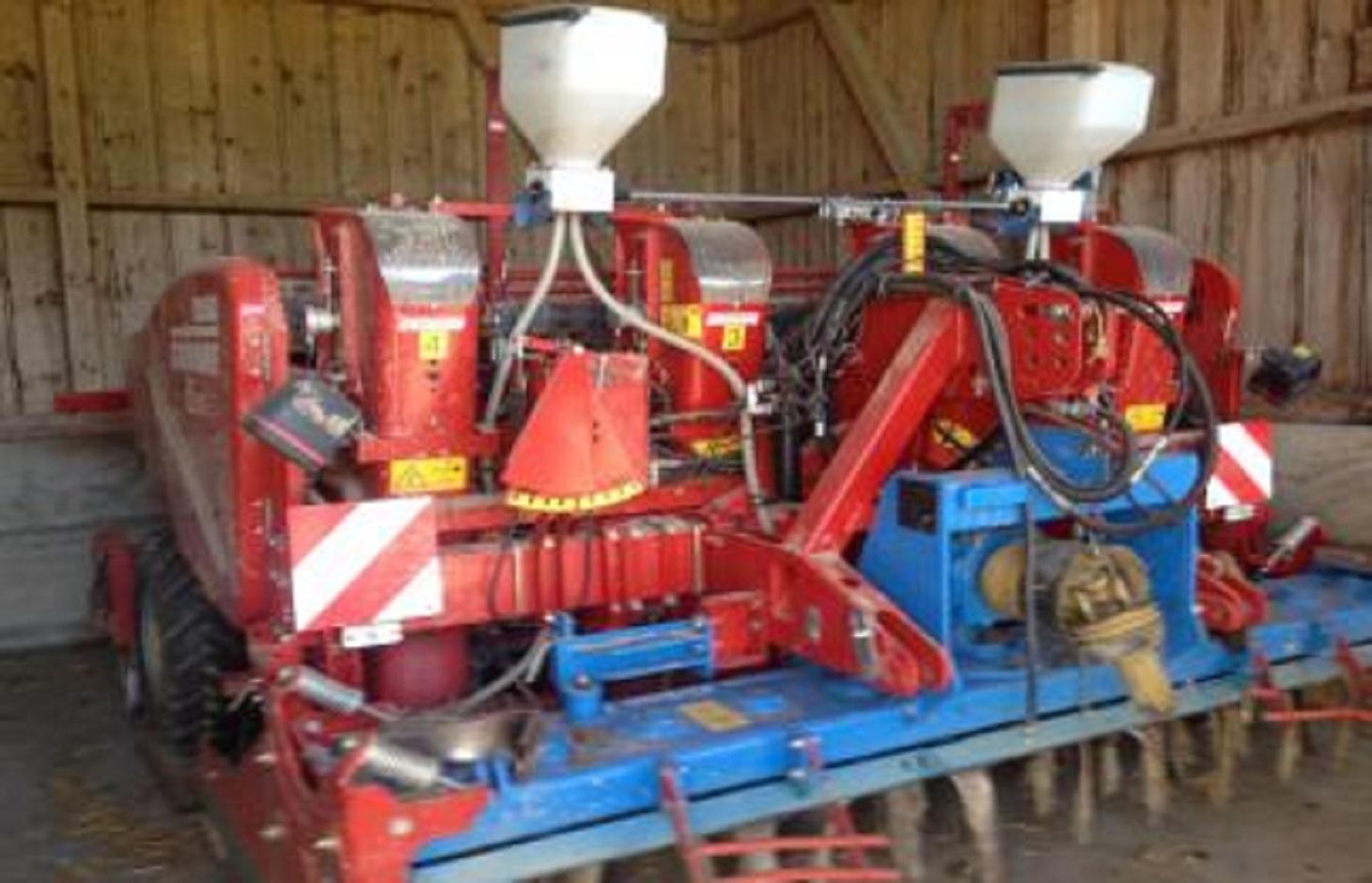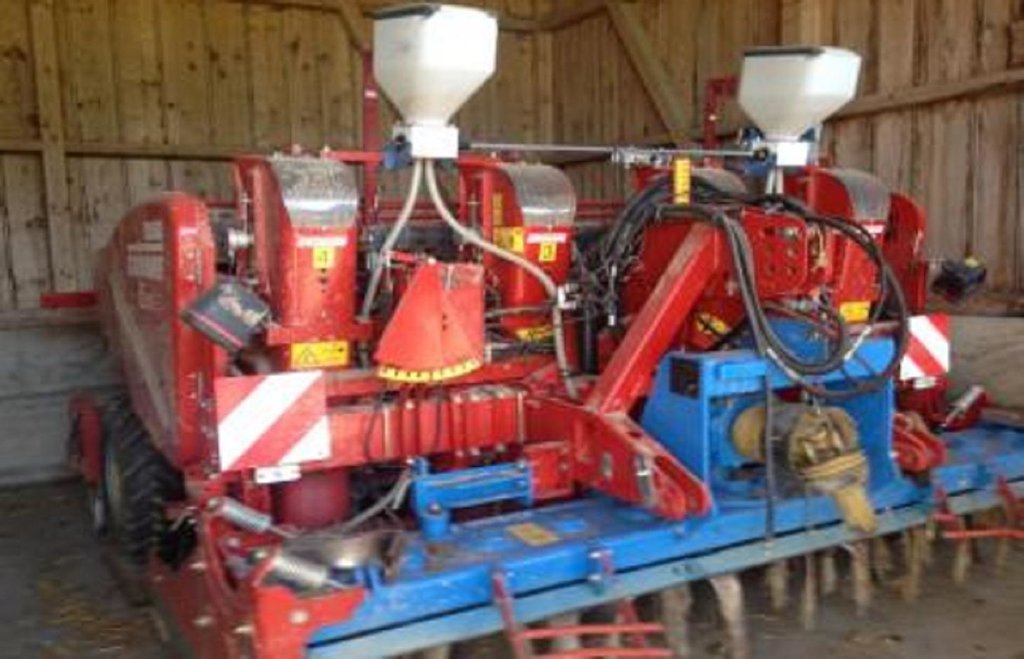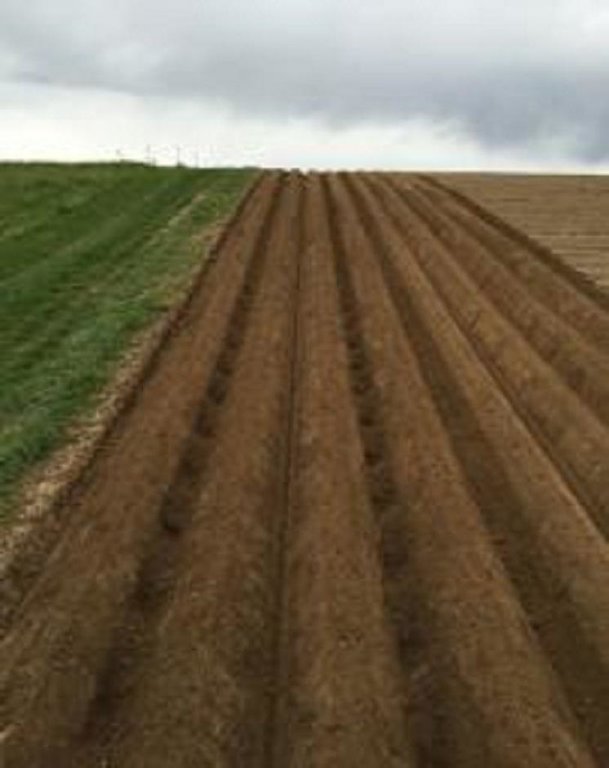Dyker System [Switzerland]
- Creation:
- Update:
- Compiler: Deborah Niggli
- Editor: –
- Reviewer: Fabian Ottiger
Dyker System im Kartoffelanbau
technologies_1304 - Switzerland
View sections
Expand all Collapse all1. General information
1.2 Contact details of resource persons and institutions involved in the assessment and documentation of the Technology
Name of project which facilitated the documentation/ evaluation of the Technology (if relevant)
Preventing and Remediating degradation of soils in Europe through Land Care (EU-RECARE )Name of the institution(s) which facilitated the documentation/ evaluation of the Technology (if relevant)
CDE Centre for Development and Environment (CDE Centre for Development and Environment) - Switzerland1.3 Conditions regarding the use of data documented through WOCAT
When were the data compiled (in the field)?
27/08/2015
The compiler and key resource person(s) accept the conditions regarding the use of data documented through WOCAT:
Yes
2. Description of the SLM Technology
2.1 Short description of the Technology
Definition of the Technology:
The Dyker system consists of a special trailer which enables a soil conserving way of cultivating potatoes by building dykes in-between the lanes.
2.2 Detailed description of the Technology
Description:
The Dyker system consists of a new tractor trailer for cultivating potatoes. It is only available as a proto type in Switzerland and was established by Grimme from Germany. With this new technology the normal dams for potatoes are built but also small dams in-between the normal dams. The small dams can prevent soil erosion and financial losses during a heavy rainfall event and are therefore a new soil conservation method.
Purpose of the Technology: The aim of this technology is to prevent soil erosion by water on the field. Water flowing down the slope of a field can be stopped at the small dams and infiltrates through a hole in front of the small dam. The construction of the dams inbetween does not take another working step but can be done simultaneously to the normal dam building. This saves time and money. The special trailer portrayed here is the only one in Switzerland and is currently being tested before getting to the market.
Establishment / maintenance activities and inputs: For the Dyker system only the new tractor trailer is needed in addition to the common tractor and the potatoe machine. At the moment this trailer is not yet for sale and there is only one proto type for testing in whole Switzerland. After the test period Grimme enterprise will decide about the production and commercialization of the Dyker system.
Natural / human environment: The system is intended to prevent soil erosion during the cultivation process of potatoes. Dams running parallel to the gradient are mostly endangered by soil erosion during the first 4-8 weeks. Small dams in-between shall slow down runoff and help infiltrating the water into the soil and thereby protect the soil.
2.3 Photos of the Technology
2.5 Country/ region/ locations where the Technology has been applied and which are covered by this assessment
Country:
Switzerland
Region/ State/ Province:
Wiler bei Seedorf
Further specification of location:
Bern
2.6 Date of implementation
If precise year is not known, indicate approximate date:
- less than 10 years ago (recently)
2.7 Introduction of the Technology
- request by Grimme enterprise to test the Dyker system
3. Classification of the SLM Technology
3.2 Current land use type(s) where the Technology is applied

Cropland
- Annual cropping
Comments:
Major land use problems (land users’ perception): The major land use problem is soil erosion by water occuring mainly at hillside situations. Land use problems related to the use of the plow are only minor because most of the land users have shifted to direct seeding, mulching or strip tillage.
3.4 SLM group to which the Technology belongs
- cross-slope measure
3.5 Spread of the Technology
Specify the spread of the Technology:
- evenly spread over an area
If the Technology is evenly spread over an area, indicate approximate area covered:
- < 0.1 km2 (10 ha)
3.6 SLM measures comprising the Technology

agronomic measures
- A3: Soil surface treatment
- A4: Subsurface treatment
Comments:
Main measures: agronomic measures
Type of agronomic measures: zero tillage / no-till
3.7 Main types of land degradation addressed by the Technology

soil erosion by water
- Wt: loss of topsoil/ surface erosion
Comments:
Main type of degradation addressed: Wt: loss of topsoil / surface erosion
3.8 Prevention, reduction, or restoration of land degradation
Specify the goal of the Technology with regard to land degradation:
- prevent land degradation
Comments:
Main goals: prevention of land degradation
4. Technical specifications, implementation activities, inputs, and costs
4.2 Technical specifications/ explanations of technical drawing
Technical knowledge required for field staff / advisors: moderate
Technical knowledge required for land users: high
Main technical functions: control of concentrated runoff: retain / trap, control of concentrated runoff: impede / retard, control of concentrated runoff: drain / divert
Secondary technical functions: reduction of slope length, increase of infiltration
4.3 General information regarding the calculation of inputs and costs
other/ national currency (specify):
CHF
Indicate exchange rate from USD to local currency (if relevant): 1 USD =:
1.0
4.4 Establishment activities
| Activity | Type of measure | Timing | |
|---|---|---|---|
| 1. | Dyker system usage during cultivation of potatoes | Agronomic |
4.5 Costs and inputs needed for establishment
| Specify input | Unit | Quantity | Costs per Unit | Total costs per input | % of costs borne by land users | |
|---|---|---|---|---|---|---|
| Labour | Labour | ha | 1.0 | 750.0 | 750.0 | 50.0 |
| Plant material | Seeds | ha | 1.0 | 3450.0 | 3450.0 | |
| Fertilizers and biocides | Fertilizer | ha | 1.0 | 1400.0 | 1400.0 | |
| Total costs for establishment of the Technology | 5600.0 | |||||
4.7 Costs and inputs needed for maintenance/ recurrent activities (per year)
Comments:
The costs were calculated for the current situation of the land user where he is testing the Dyker system for free. He only has to pay for the labour, the seeds and fertilizer have to be paid by the land users he applies the technology (as a contractor).
4.8 Most important factors affecting the costs
Describe the most determinate factors affecting the costs:
The Dyker system is being tested for free at the moment. But machine costs will later affect the total costs most determinately.
5. Natural and human environment
5.1 Climate
Annual rainfall
- < 250 mm
- 251-500 mm
- 501-750 mm
- 751-1,000 mm
- 1,001-1,500 mm
- 1,501-2,000 mm
- 2,001-3,000 mm
- 3,001-4,000 mm
- > 4,000 mm
Agro-climatic zone
- sub-humid
Thermal climate class: temperate
5.2 Topography
Slopes on average:
- flat (0-2%)
- gentle (3-5%)
- moderate (6-10%)
- rolling (11-15%)
- hilly (16-30%)
- steep (31-60%)
- very steep (>60%)
Landforms:
- plateau/plains
- ridges
- mountain slopes
- hill slopes
- footslopes
- valley floors
Altitudinal zone:
- 0-100 m a.s.l.
- 101-500 m a.s.l.
- 501-1,000 m a.s.l.
- 1,001-1,500 m a.s.l.
- 1,501-2,000 m a.s.l.
- 2,001-2,500 m a.s.l.
- 2,501-3,000 m a.s.l.
- 3,001-4,000 m a.s.l.
- > 4,000 m a.s.l.
5.3 Soils
Soil depth on average:
- very shallow (0-20 cm)
- shallow (21-50 cm)
- moderately deep (51-80 cm)
- deep (81-120 cm)
- very deep (> 120 cm)
Soil texture (topsoil):
- medium (loamy, silty)
Topsoil organic matter:
- medium (1-3%)
5.4 Water availability and quality
Ground water table:
5-50 m
Availability of surface water:
good
Water quality (untreated):
good drinking water
5.5 Biodiversity
Species diversity:
- high
5.6 Characteristics of land users applying the Technology
Market orientation of production system:
- commercial/ market
Off-farm income:
- 10-50% of all income
Relative level of wealth:
- rich
Individuals or groups:
- individual/ household
Level of mechanization:
- mechanized/ motorized
Gender:
- men
Indicate other relevant characteristics of the land users:
Land users applying the Technology are mainly Leaders / privileged
5.7 Average area of land owned or leased by land users applying the Technology
- < 0.5 ha
- 0.5-1 ha
- 1-2 ha
- 2-5 ha
- 5-15 ha
- 15-50 ha
- 50-100 ha
- 100-500 ha
- 500-1,000 ha
- 1,000-10,000 ha
- > 10,000 ha
Is this considered small-, medium- or large-scale (referring to local context)?
- medium-scale
5.8 Land ownership, land use rights, and water use rights
Land ownership:
- individual, titled
Land use rights:
- individual
Water use rights:
- individual
5.9 Access to services and infrastructure
health:
- poor
- moderate
- good
education:
- poor
- moderate
- good
technical assistance:
- poor
- moderate
- good
employment (e.g. off-farm):
- poor
- moderate
- good
markets:
- poor
- moderate
- good
energy:
- poor
- moderate
- good
roads and transport:
- poor
- moderate
- good
drinking water and sanitation:
- poor
- moderate
- good
financial services:
- poor
- moderate
- good
6. Impacts and concluding statements
6.1 On-site impacts the Technology has shown
Socio-economic impacts
Production
risk of production failure
Income and costs
workload
Socio-cultural impacts
SLM/ land degradation knowledge
Ecological impacts
Water cycle/ runoff
surface runoff
Soil
soil loss
soil crusting/ sealing
soil compaction
Other ecological impacts
Hazard towards adverse events
6.2 Off-site impacts the Technology has shown
downstream flooding
damage on neighbours' fields
6.3 Exposure and sensitivity of the Technology to gradual climate change and climate-related extremes/ disasters (as perceived by land users)
Gradual climate change
Gradual climate change
| Season | Type of climatic change/ extreme | How does the Technology cope with it? | |
|---|---|---|---|
| annual temperature | increase | well |
Climate-related extremes (disasters)
Meteorological disasters
| How does the Technology cope with it? | |
|---|---|
| local rainstorm | not well |
Hydrological disasters
| How does the Technology cope with it? | |
|---|---|
| general (river) flood | not well |
6.4 Cost-benefit analysis
How do the benefits compare with the establishment costs (from land users’ perspective)?
Short-term returns:
slightly positive
Long-term returns:
positive
6.5 Adoption of the Technology
Comments:
There is a moderate trend towards spontaneous adoption of the Technology
Comments on adoption trend: A trend towards spontaneous adoption is there but the Dyker system is not yet on the market.
6.7 Strengths/ advantages/ opportunities of the Technology
| Strengths/ advantages/ opportunities in the land user’s view |
|---|
| The small dams in-between the normal dams enhance infiltration of the soil and stop runoff. |
| Strengths/ advantages/ opportunities in the compiler’s or other key resource person’s view |
|---|
|
The problematic crop of potatoes can be prevented from soil erosion thanks to the Dyker system. How can they be sustained / enhanced? The system has to be on the market soon and to be sold at an appropriate price. |
6.8 Weaknesses/ disadvantages/ risks of the Technology and ways of overcoming them
| Weaknesses/ disadvantages/ risks in the land user’s view | How can they be overcome? |
|---|---|
| The overhang of the machine when turning around requires high knowledge and time. | Good technical skills and experience with big, heavy machines are necessary to use the Dyker system correctly so that it is a soil conservating method. |
| Costs for the Dyker system are not yet published. They should not exceed USD 5000-6000$. | Costs should not go beyond the financial possibilities of a land user in order to support a great adoption of the system. |
| Weaknesses/ disadvantages/ risks in the compiler’s or other key resource person’s view | How can they be overcome? |
|---|---|
| The additional weight of the trailer could lead to soil compaction. | Divide the weight equally, adapt tire pressure in order to minimize damage to the topsoil layer. |
Links and modules
Expand all Collapse allLinks
No links
Modules
No modules




